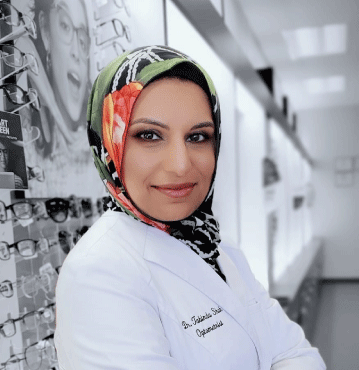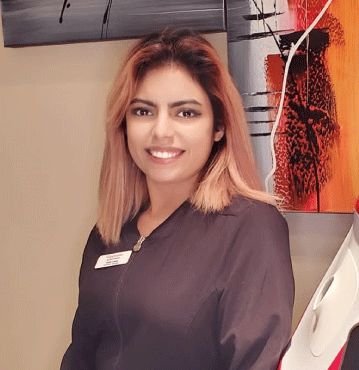Project Description
Eye infection basics
If you’ve noticed some pain, swelling, itching, or redness in your eye, you likely have an eye infection. Eye infections fall into three specific categories based on their cause: viral, bacterial, or fungal, and each is treated differently.
The good news is eye infections aren’t hard to spot, so you can seek treatment quickly.
Infectious conjunctivitis, or pink eye, is one of the most common eye infections. It happens when blood vessels in the conjunctiva, the thin outermost membrane surrounding your eyeball, become infected by bacteria or a virus.
As a result, your eyes become pink or red, and inflamed.
It can also result from allergies or exposure to chemicals, like chlorine, in swimming pools.
You’ll likely need the following treatments depending on which type of conjunctivitis you have:
- Bacterial: Antibiotic eye drops, ointments, or oral medications to help kill bacteria in your eyes. After starting antibiotics, symptoms fade in a couple of days.
- Viral: No treatment exists. Symptoms tend to fade after 7 to 10 days. Apply a clean, warm, wet cloth to your eyes to relieve discomfort, wash hands frequently, and avoid contact with others.
- Allergic: Over-the-counter (OTC) antihistamines like diphenhydramine (Benadryl) or loratadine (Claritin) help relieve allergy symptoms. Antihistamines can be taken as eye drops, and anti-inflammatory eye drops can also help with symptoms.
Infectious keratitis happens when your cornea gets infected. The cornea is the clear layer that covers your pupil and iris. Keratitis results from either an infection (bacterial, viral, fungal, or parasitic) or an eye injury. Keratitis means swelling of the cornea and isn’t always infectious.
Symptoms of keratitis can include:
- redness and swelling in your eye
- eye pain or discomfort
- producing more tears than usual or an abnormal discharge
- pain or discomfort when you open and close your eyelids
- loss of some vision or blurry vision
- light sensitivity
- sensation of having something stuck in your eye
You’re more likely to develop keratitis if:
- you wear contact lenses
- your immune system is weak from another condition or illness
- you live somewhere that’s humid and warm
- you use corticosteroid eyedrops for an existing eye condition
- your eye is injured, especially by plants with chemicals that can get into your eye
See your doctor as soon as possible to stop the infection if you notice any keratitis symptoms. Some treatments for keratitis include:
- Bacterial. Antibacterial eye drops can usually clear up a keratitis infection in a few days. Oral antibiotics are typically used to treat more severe infections.
- Fungal. You’ll need antifungal eye drops or medication to kill the fungal organisms causing your keratitis. This can take weeks to months.
- Viral. There’s no way to eliminate a virus. Oral antiviral medications or eyedrops can help stop the infection in a few days up to a week. Viral keratitis symptoms may later return even with treatment.
Endophthalmitis is severe inflammation of the inside of your eye resulting from a bacterial or fungal infection. Candida fungal infections are the most common cause of endophthalmitis.
This condition can happen after certain eye surgeries, such as cataract surgery, although this is rare. It may also happen after your eye is penetrated by an object. Some symptoms to watch out for, especially after surgery or an eye injury, include:
- mild to severe eye pain
- partial or complete vision loss
- blurry vision
- redness or swelling around the eye and eyelids
- eye pus or discharge
- sensitivity to bright lights
Treatment depends on what causes the infection and how severe it is.
First, you’ll need antibiotics injected directly into your eye with a special needle to help stop the infection. You may also receive a corticosteroid shot to relieve inflammation.
If something has gotten into your eye and caused the infection, you’ll need to get it removed right away. Seek emergency medical attention in these cases — never try to remove an object from your eye by yourself.
After antibiotics and object removal, your symptoms can begin to get better in a few days.
Blepharitis is an inflammation of your eyelids, the skin folds covering your eyes. This type of inflammation is usually caused by clogging of the oil glands inside the eyelid skin at the base of your eyelashes. Blepharitis may be caused by bacteria.
Symptoms of blepharitis include:
- eye or eyelid redness, itchiness, swelling
- eyelid oiliness
- sensation of burning in your eyes
- feeling like something’s stuck in your eyes
- sensitivity to light
- producing more tears than usual
- crustiness on your eyelashes or corners of your eyes
You’re more likely to develop blepharitis if you:
- have scalp or eyebrow dandruff
- are allergic to your eye or face makeup
- have oil glands that don’t work properly
- have lice or mites on your eyelashes
- take certain medications that affect your immune system
Treatments for blepharitis include:
- cleaning your eyelids with clean water and applying a warm, wet, clean towel to your eyelids to relieve swelling
- using corticosteroid eye drops or ointments to help with inflammation
- using lubricating eye drops to moisten your eyes and prevent irritation from dryness
- taking antibiotics as oral medications, eye drops, or ointments applied to your eyelids
A sty (also called a hordeolum) is a pimple-like bump that develops from an oil gland on the outer edges of your eyelids. These glands can get clogged with dead skin, oils, and other matter and allow bacteria to overgrow in your gland. The resulting infection causes a sty.
Sty symptoms include:
- pain or tenderness
- itchiness or irritation
- swelling
- producing more tears than usual
- crustiness around your eyelids
- increased tear production
Some treatments for sties include:
- applying a clean, warm, damp cloth to your eyelids for 20 minutes at a time a few times a day
- using mild, scent-free soap and water to clean your eyelids
- taking over-the-counter (OTC) pain relievers, such as acetaminophen (Tylenol), to help with pain and swelling
- stopping use of contact lenses or eye makeup until the infection goes away
- using antibiotic ointments to help kill the infectious overgrowth
See your doctor if the pain or swelling gets worse, even with treatment. A sty should disappear in about 7 to 10 days. If it doesn’t, ask your doctor about other possible treatments.
Uveitis happens when your uvea gets inflamed from infection. The uvea is the central layer of your eyeball that transports blood to your retina — the part of your eye that transmits images to your brain.
Uveitis often results from immune system conditions, viral infections, or eye injuries. Uveitis doesn’t usually cause any long-term problems, but you can lose vision if a severe case isn’t treated.
Uveitis symptoms can include:
- eye redness
- pain
- “floaters” in your visual field
- sensitivity to light
- blurry vision
Treatment for uveitis may include:
- wearing darkened glasses
- eye drops that open up your pupil to relieve pain
- corticosteroid eye drops or oral steroids that relieve inflammation
- eye injections to treat symptoms
- oral antibiotics for infections that have spread beyond your eye
- medications that subdue your immune system (severe cases)
Uveitis usually starts to improve after a few days of treatment. Types that affect the back of your eye, called posterior uveitis, may take longer — up to several months if it’s caused by an underlying condition.
Eyelid cellulitis, or periorbital cellulitis, happens when eye tissues get infected. It’s often caused by an injury like a scratch to your eye tissues that introduces infectious bacteria, such as Staphylococcus (staph), or from bacterial infections of nearby structures, such as sinus infections.
Young children are more likely to get cellulitis because they’re at higher risk of infection due to the type of bacteria that causes this condition.
Cellulitis symptoms include eyelid redness and swelling as well as eye skin swelling. You typically won’t have any eye pain or discomfort.
Treatment for cellulitis may include:
- applying a warm, damp, clean towel to your eye for 20 minutes at a time to relieve inflammation
- taking oral antibiotics, such as amoxicillin, or IV antibiotics for children under 4
- getting surgery to relieve pressure within your eye if the infection becomes very severe (this rarely happens)
Ocular herpes happens when your eye is infected by the herpes simplex virus (HSV-1). It’s often just called eye herpes.
Eye herpes is spread by contact with someone who has an active HSV-1 infection, not through sexual contact (that’s HSV-2). Symptoms tend to infect one eye at a time, and include:
- eye pain and irritation of the eye
- sensitivity to light
- blurry vision
- eye tissue or corneal tears
- thick, watery discharge
- eyelid inflammation
Symptoms may go away on their own without treatment after 7 to 10 days, up to a few weeks.
Treatment may include:
- antiviral medication, such as acyclovir (Zovirax), as eye drops, oral medications, or topical ointments
- debridement, or brushing off your cornea with cotton to get rid of infected cells
- corticosteroid eye drops to relieve inflammation if infection spreads further into your eye (the stroma)
MEET OUR DOCTORS
A group of experts who have distinguished themselves as innovative leaders in their chosen disciplines. As part of an academic medical center, our doctors have access to advanced diagnostics, treatments, and research that may not yet be widely available elsewhere.
OUR PATIENTS SAY
We want to make sure you enjoy healthy, happy eyes for as long as possible.
I started having an issue with my eye and was getting a little nervous about it, so I walked in to this Visionworks location hoping I would be able to get it checked out….and I was! They fit me in and I felt I received a really thorough exam. The two staff members who helped me were so friendly and caring so I would like to thank Antoinette and Lynn. And a very special thank you to the care I received from Dr Benoit. She was amazing!

I had a great experience and the staff were great. I felt welcomed soon a I walked through the doors. The customer service was great and went above and beyond to make sure my needs were met. Glasses, contacts etc..
I’ve been going here for ten yrs! I wont go anywhere else. My favorite people when comes to my eye care!











